Roofing Companies Abergavenny
Find Roofing Service in Abergavenny
Receive 3 FREE Roofing Company quotes for your project today! Compare profiles, reviews, accreditations, portfolio, etc... and choose the best offer.
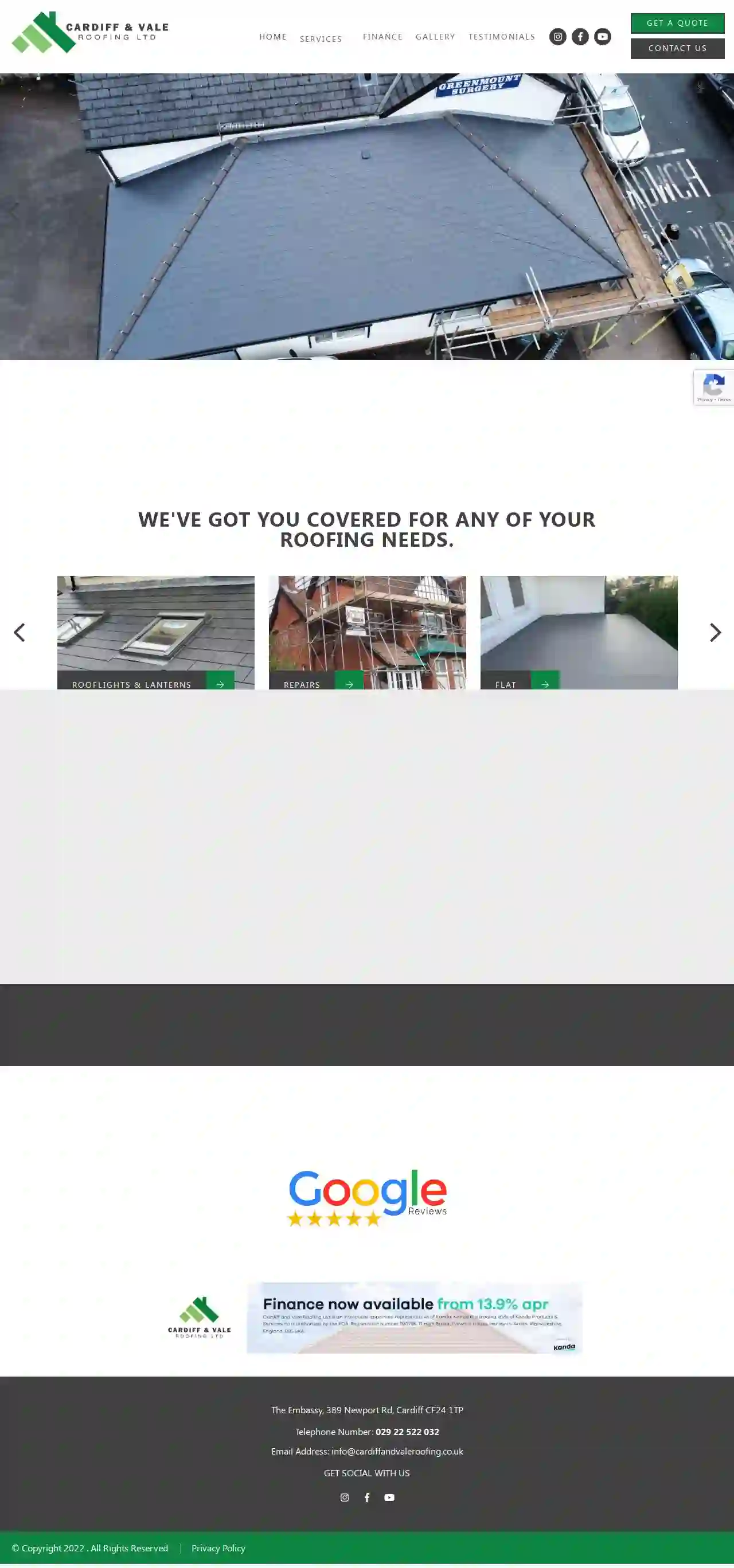
Cardiff and Vale Roofing LTD
4.974 reviewsThe Embassy, 389 Newport Rd, Cardiff, GBWe've got you covered for any of your Roofing needs. Cardiff and Vale Roofing are an independent roofing company based in Cardiff supporting the City of Cardiff and surrounding areas. Cardiff and Vale Roofing have over 70 years combined experience in all manner of Roofing and all work is carried out to the highest standard. We pride ourselves on offering the best service to our customers. Cardiff and Vale Roofing is always competitive on price and will provide you with a free, no obligation quote. Contact us today to discuss your roofing requirements.
- Services
- Why Us?
- Gallery
Get Quote
Building & Roofing C W R
Cirencester Road, Northleach, Unit 1, The Old Mill, GL54 5AA, GBCWR Builders is a family-run building company based in the heart of the Cotswolds. We have been building and renovating homes for over 20 years, and we pride ourselves on our high quality workmanship and attention to detail. We offer a full range of building services, from small extensions to large new builds. We are fully insured and accredited, and we are committed to providing our clients with a stress-free building experience. Our team of experienced builders is dedicated to delivering exceptional results. We work closely with our clients to understand their needs and to create bespoke solutions that meet their individual requirements. We are passionate about what we do, and we are committed to exceeding our clients' expectations. Whether you are looking to extend your home, renovate your kitchen or bathroom, or build your dream home, CWR Builders is the company for you. We offer a free, no obligation quote, so why not get in touch today?
- Services
- Why Us?
- Accreditations
- Our Team
- Testimonials
Get Quote
D & R Roofing
4.58 reviewsAberdulais, Neath, Tithe Barn, SA10 8HL, GBBASED IN NEATH, ESTABLISHED IN 1995 EXPERTS IN ALL ASPECTS OF DOMESTIC AND COMMERCIAL ROOFING Professional Roofers serving Domestic and Commercial Clients across the west Glamorgan area. D&R Roofing was formed in 1995 and is a professional roofing company based in Neath and operating across the South Wales region. We offer our full range of roofing services to clients from the domestic and commercial sector and are large enough to cope with the largest of projects and often work for large national developers and Local Authorities. Domestic clients will also receive the same excellent level of customer service, attention to detail and exceptionally high standards of workmanship which has become our trademark and is the key factor in us receiving most of our work from word of mouth and personal recommendations from previous clients. We welcome all enquiries and offer free and friendly advice wherever we can, we don’t employ sales staff or use high pressure sales techniques we just offer professional, knowledgeable and honest advice. If you have an enquiry please do not hesitate to contact us and we will be pleased to discuss your requirements. What We Do New Roofs Roof Coverings Tiles & Slating Roof Repairs Chimneys Ridge Tiles Lead Work Fascias & Soffits Guttering Why Choose D&R Roofing? FULLY INSURED FAIR & COMPETITIVE RATES EXCELLENT WORKMANSHIP ALL WORK GUARANTEED FREE SURVEY & QUOTATION DOMESTIC & COMMERCIAL WORK ALL ROOF RREPAIRS & NEW BUILD
- Services
- Why Us?
- Our Team
- Testimonials
- Gallery
Get Quote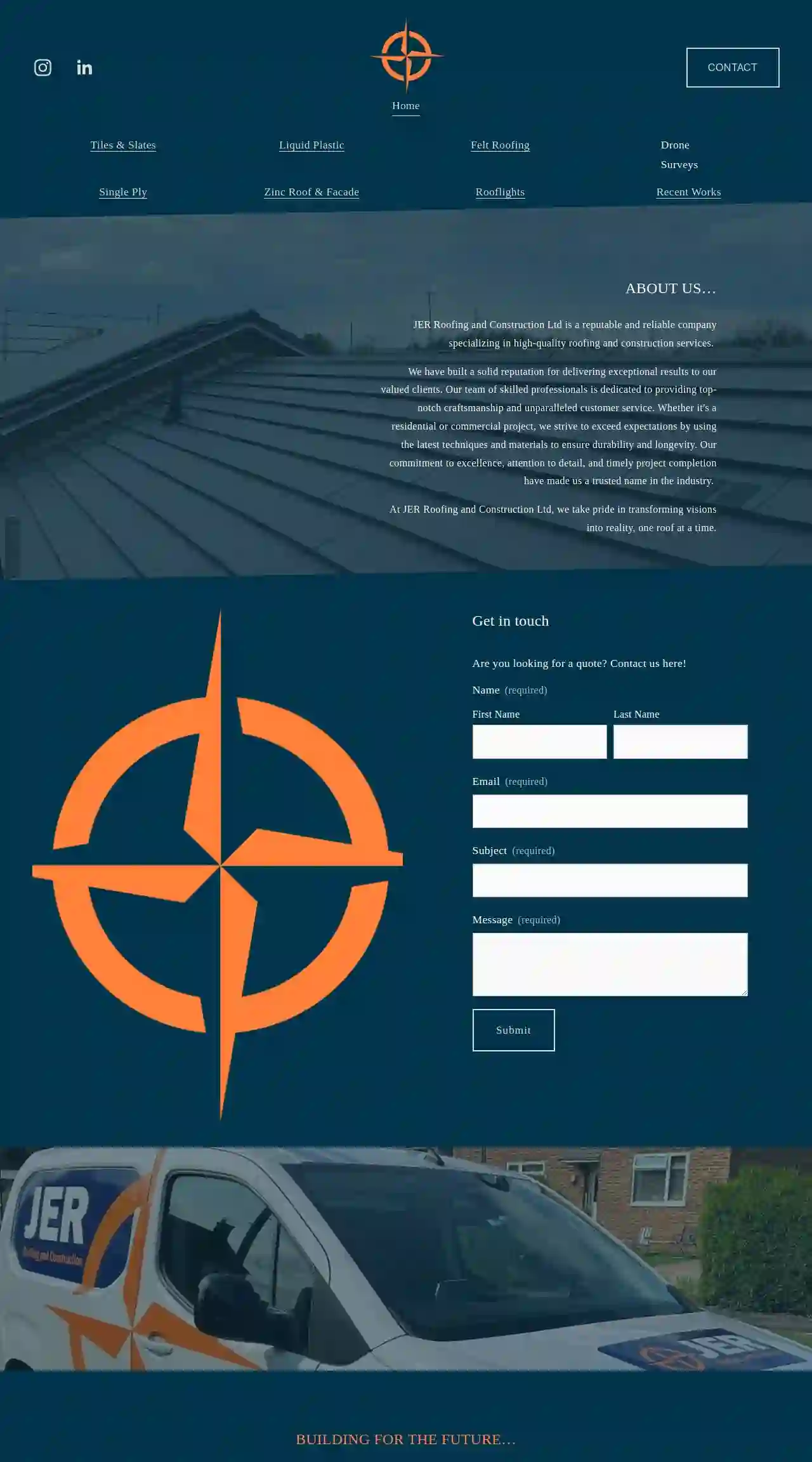
JER Roofing and Construction Ltd
Victory House, 400 Pavilion Drive, Northampton, NN47PA, GBJER Roofing and Construction Ltd is a reputable and reliable company specializing in high-quality roofing and construction services. We have built a solid reputation for delivering exceptional results to our valued clients. Our team of skilled professionals is dedicated to providing top-notch craftsmanship and unparalleled customer service. Whether it's a residential or commercial project, we strive to exceed expectations by using the latest techniques and materials to ensure durability and longevity. Our commitment to excellence, attention to detail, and timely project completion have made us a trusted name in the industry. At JER Roofing and Construction Ltd, we take pride in transforming visions into reality, one roof at a time.
- Services
- Why Us?
- Gallery
Get Quote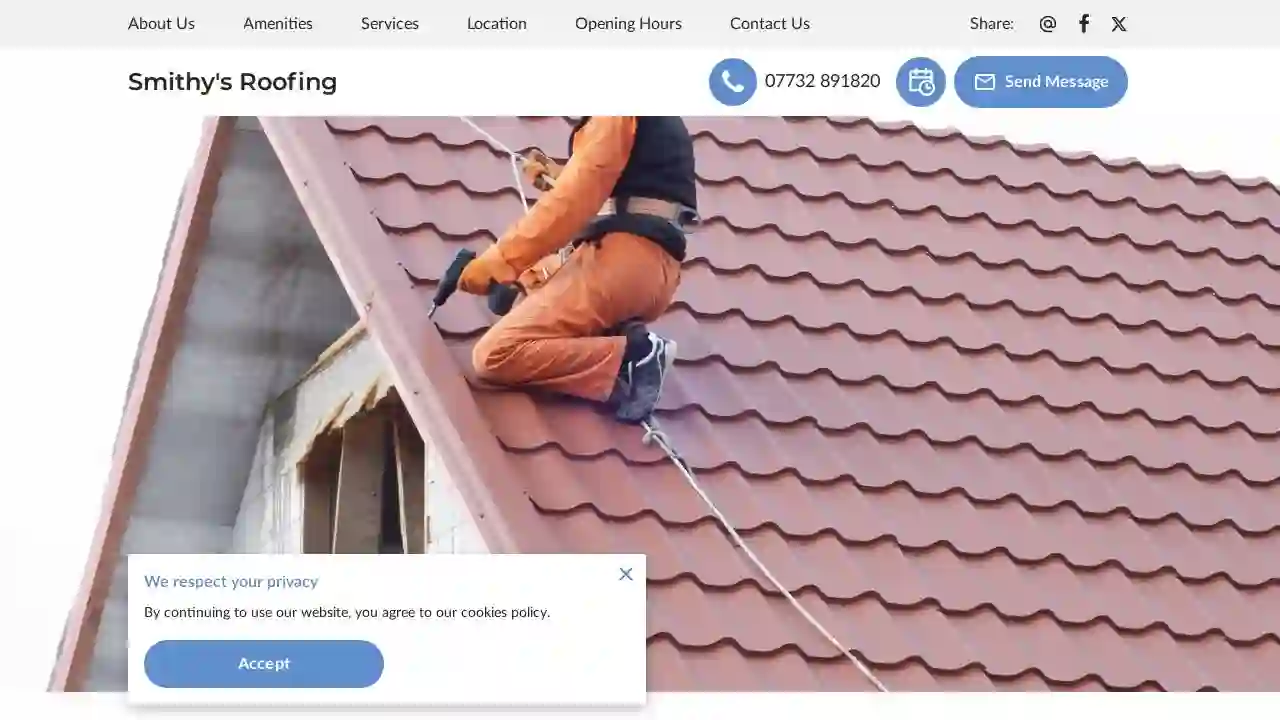
Smithy's Roofing
14 Ysgurbowern, Tredegar, NP22 4PN, GBAt Smithy's Roofing, you'll find a family run and owned business in Tredegar with years of experience. Rest assured, we are the roofers – all the work is carried out by us, not sub-contractors, so you know the quality is going to be high. With very low overheads we know we can deliver a high-quality package at an affordable rate. Get in touch on +447732891820 – we look forward to hearing from you!
- Services
- Why Us?
Get Quote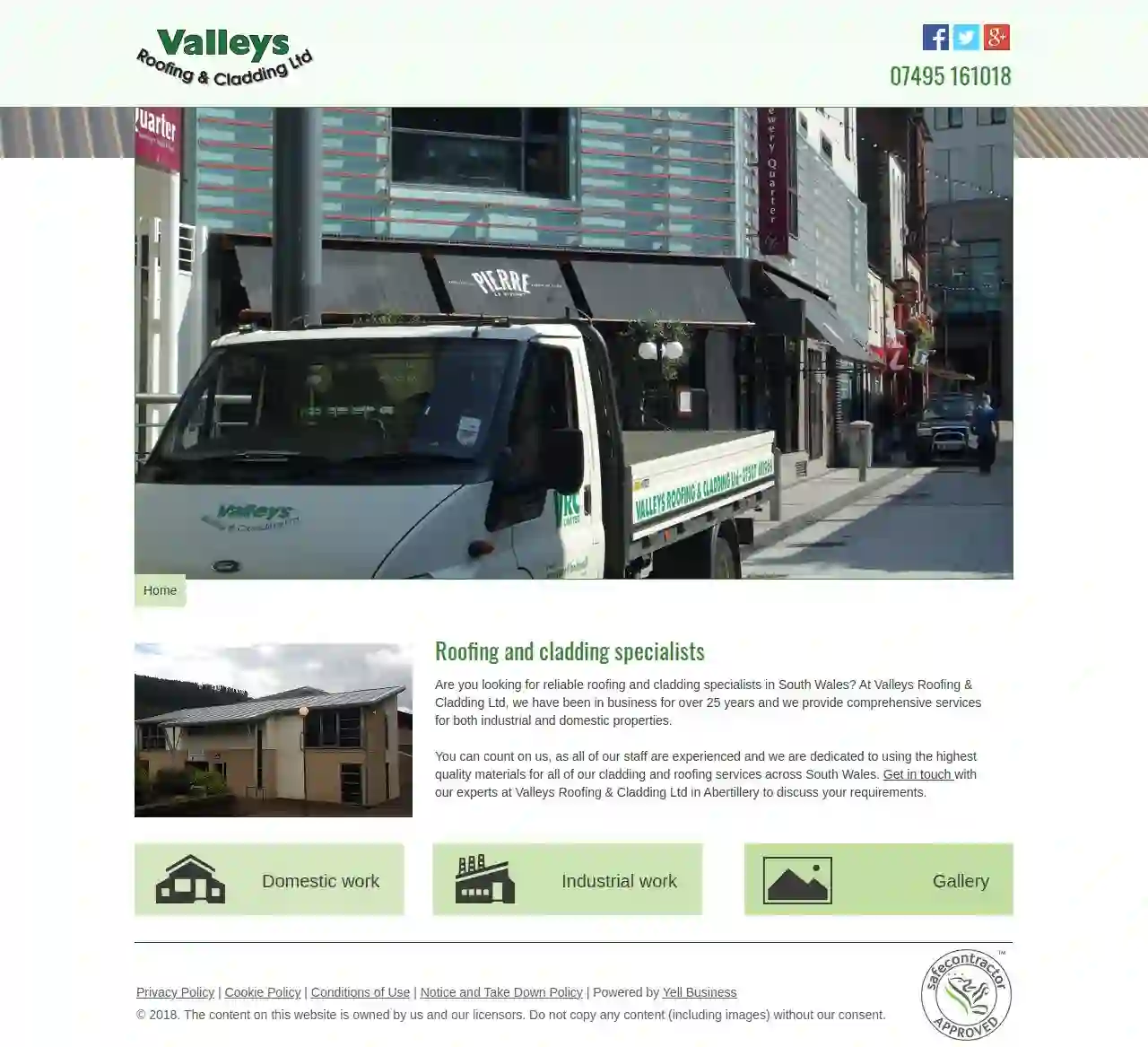
Valleys Roofing & Cladding Ltd
53 reviews195 Alma Street, ABERTILLERY, NP13 1QD, GBRoofing and cladding specialists Are you looking for reliable roofing and cladding specialists in South Wales? At Valleys Roofing & Cladding Ltd, we have been in business for over 25 years and we provide comprehensive services for both industrial and domestic properties. You can count on us, as all of our staff are experienced and we are dedicated to using the highest quality materials for all of our cladding and roofing services across South Wales. Get in touch with our experts at Valleys Roofing & Cladding Ltd in Abertillery to discuss your requirements.
- Services
- Why Us?
- Accreditations
- Our Team
- Testimonials
- Gallery
Get Quote
SWC Roofing Ltd
55 reviews123 Main Street, London, SW1A 1AA, GBWelcome to SWC Roofing Ltd, a professional and reliable roofing company based in the UK. With over 15 years of experience, we have built a reputation for delivering high-quality roofing services to both residential and commercial clients. Our team of experts is dedicated to providing a personalized service, ensuring that every project is completed to the highest standards. We offer a wide range of roofing services, including roof repairs, replacements, and installations. Our commitment to quality, safety, and customer satisfaction has earned us a strong reputation in the industry. We are fully accredited by the National Federation of Roofing Contractors and are proud to be a member of the Confederation of Roofing Contractors. Contact us today to learn more about our services and how we can help you with your roofing needs.
- Services
- Why Us?
- Accreditations
Get Quote
LBS Builders Merchants Aberdare
443 reviewsLBS Business Centre, Parc Amanwy, Ammanford, SA18 3FE, GBWe use cookies to make your experience better. To comply with the new e-Privacy directive, we need to ask for your consent to set the cookies. Read our policy. Leading Independent Builders Merchant For 90 Years. The LBS Group. Blocks. Fully Stocked. Shop Timber. Click & Collect. Browse and Buy >>. Sign up for an LBS Account today! Set up an LBS Account and make the most of the benefits available for trade & DIY customers. Account Benefits: Credit & Cash Account, 500 local, reputable staff, Same or next day delivery, Access to 50 branches, Award-winning company, Up to 7,000 lines available.
- Services
- Why Us?
- Accreditations
- Our Team
- Testimonials
- Gallery
Get Quote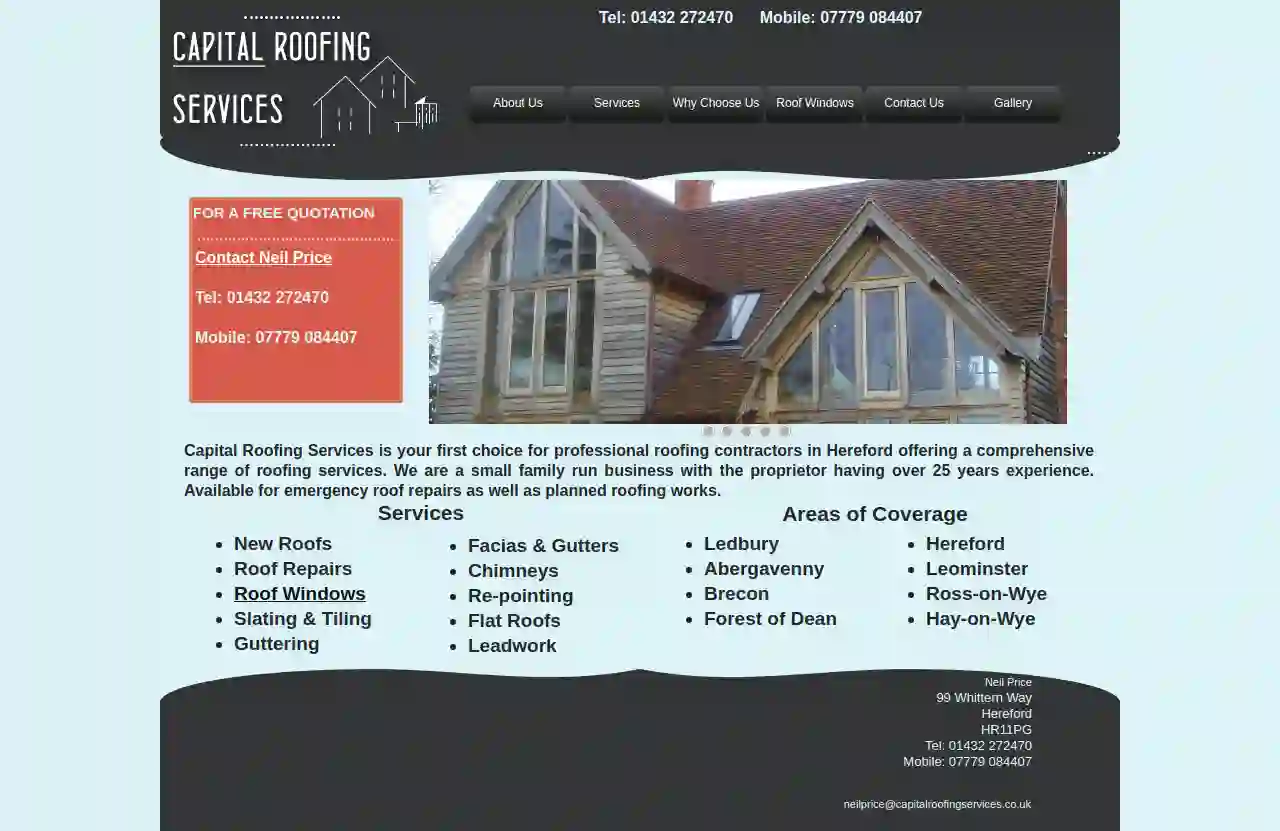
Capital Roofing Services
4.611 reviews99 Whittern Way, Hereford, HR11PG, GBCapital Roofing Services is your first choice for professional roofing contractors in Hereford. We are a small family run business with the proprietor having over 25 years experience. We are available for emergency roof repairs as well as planned roofing works.
- Services
- Why Us?
- Our Team
- Gallery
Get Quote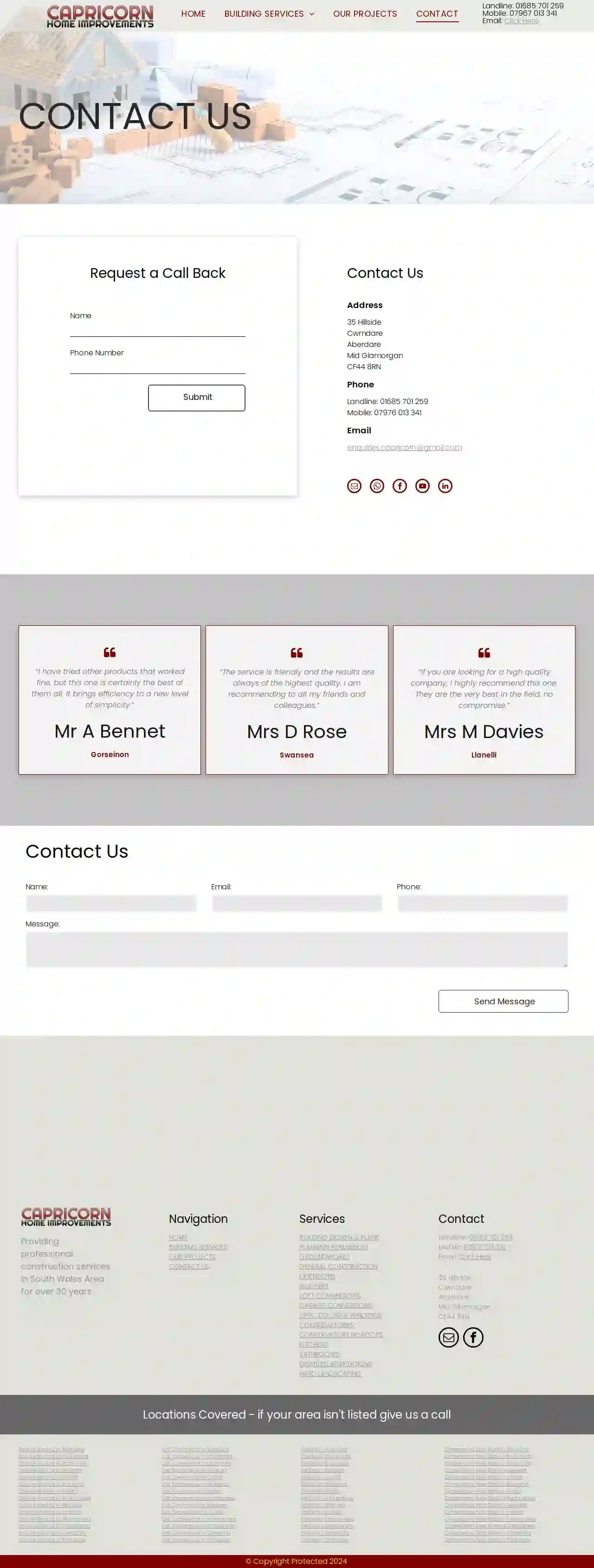
Capricorn Home Improvements
Cwmdare, Aberdare, 35 Hillside, CF44 8RN, GBWelcome to Capricorn Windows Limited we are a family run business with over 30 years experience in property Maintenance and Construction company based in Mid Glamorgan and operating across the South West Wales area. We work for, and welcome enquiries from Domestic, Commercial and Local Authority clients and are pleased to be Local Authority Approved. One aspect of our business that we are very proud of and our clients have complimented us on is our ability to carry out all the stages of each and every job, from providing the drawings and designs, to obtaining planning permission to groundworks and to the construction and plumbing and electrical work to finishing off the job with painting and decorating. As a business we have found over the years that our work is our best advert and most of our enquiries come from personal recommendations from previous clients that are pleased with our work and happy to recommend us to future clients. We welcome enquiries from all clients and we are happy to provide free and friendly unbiased advice and free written quotations for all works. Whatever the size of your project we are here to help and welcome enquiries if you would like an informal chat with us please do not hesitate to contact us we never use hard sell tactics used by some other less scrupulous firms we just offer free, unbiased, professional and friendly advice.
- Services
- Why Us?
- Our Team
- Testimonials
- Gallery
Get Quote
Over 12,314+ Roofing Contractors in our network
Our roofing experts operate in Abergavenny & beyond!
Roofyng.co.uk has curated and vetted the Best Roofers near Abergavenny. Find the most reliable business today.
Frequently Asked Questions About Roofing Companies
- Experience: Companies with a solid track record and years of experience in the industry.
- Licensing and Insurance: Verify they are properly licensed to operate in your area and carry adequate insurance to protect you from liability.
- Certifications: Look for certifications from reputable organizations, demonstrating expertise in specific roofing materials or techniques.
- Positive Reviews: Check online reviews and testimonials from previous customers.
- Professionalism: Choose a company that communicates clearly, provides detailed estimates, and has a courteous and responsive team.
- Hot Climates: Opt for light-colored or reflective roofing materials to reduce heat absorption. Consider tile roofs for their thermal mass and heat resistance.
- Cold Climates: Ensure your roof has adequate insulation and ventilation to prevent ice dams and moisture buildup. Metal roofs can shed snow effectively.
- High-Wind Areas: Choose roofing systems with high wind ratings and properly installed hurricane straps or clips to enhance wind resistance.
- Areas with Heavy Rainfall: Ensure your roof has proper drainage and a waterproof membrane to prevent leaks.
- Safety First: Avoid going onto the roof during a storm, as it's dangerous.
- Document the Damage: Take photos and videos of the damage for insurance purposes.
- Contact Your Insurance Company: Report the damage to your insurance company as soon as possible to initiate a claim.
- Temporary Repairs: If safe, address any immediate leaks using buckets or tarps to minimize further damage.
- Contact a Roofing Contractor: After the storm, have a qualified roofing contractor inspect the roof and provide a repair estimate.
- Regular Inspections: Inspect your roof at least twice a year for signs of damage or wear and tear.
- Gutter Cleaning: Clean gutters and downspouts regularly to prevent clogs and ensure proper drainage.
- Tree Trimming: Trim overhanging branches to avoid damage from falling debris and reduce shade, preventing moss growth.
- Proper Ventilation: Ensure good attic ventilation to regulate temperature and moisture.
- Timely Repairs: Address any damage promptly to prevent escalation.
How do I find a good roofing company?
How do I choose the right type of roof for my climate?
What should I do if my roof is damaged in a storm?
How do I prevent roof damage?
How do I find a good roofing company?
- Experience: Companies with a solid track record and years of experience in the industry.
- Licensing and Insurance: Verify they are properly licensed to operate in your area and carry adequate insurance to protect you from liability.
- Certifications: Look for certifications from reputable organizations, demonstrating expertise in specific roofing materials or techniques.
- Positive Reviews: Check online reviews and testimonials from previous customers.
- Professionalism: Choose a company that communicates clearly, provides detailed estimates, and has a courteous and responsive team.
How do I choose the right type of roof for my climate?
- Hot Climates: Opt for light-colored or reflective roofing materials to reduce heat absorption. Consider tile roofs for their thermal mass and heat resistance.
- Cold Climates: Ensure your roof has adequate insulation and ventilation to prevent ice dams and moisture buildup. Metal roofs can shed snow effectively.
- High-Wind Areas: Choose roofing systems with high wind ratings and properly installed hurricane straps or clips to enhance wind resistance.
- Areas with Heavy Rainfall: Ensure your roof has proper drainage and a waterproof membrane to prevent leaks.
What should I do if my roof is damaged in a storm?
- Safety First: Avoid going onto the roof during a storm, as it's dangerous.
- Document the Damage: Take photos and videos of the damage for insurance purposes.
- Contact Your Insurance Company: Report the damage to your insurance company as soon as possible to initiate a claim.
- Temporary Repairs: If safe, address any immediate leaks using buckets or tarps to minimize further damage.
- Contact a Roofing Contractor: After the storm, have a qualified roofing contractor inspect the roof and provide a repair estimate.
How do I prevent roof damage?
- Regular Inspections: Inspect your roof at least twice a year for signs of damage or wear and tear.
- Gutter Cleaning: Clean gutters and downspouts regularly to prevent clogs and ensure proper drainage.
- Tree Trimming: Trim overhanging branches to avoid damage from falling debris and reduce shade, preventing moss growth.
- Proper Ventilation: Ensure good attic ventilation to regulate temperature and moisture.
- Timely Repairs: Address any damage promptly to prevent escalation.